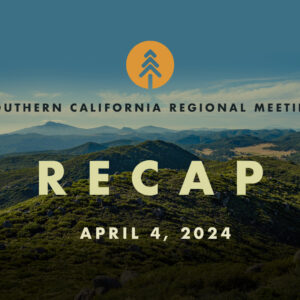Governor Signs Legislation Investing $170M for Wildfire Prevention
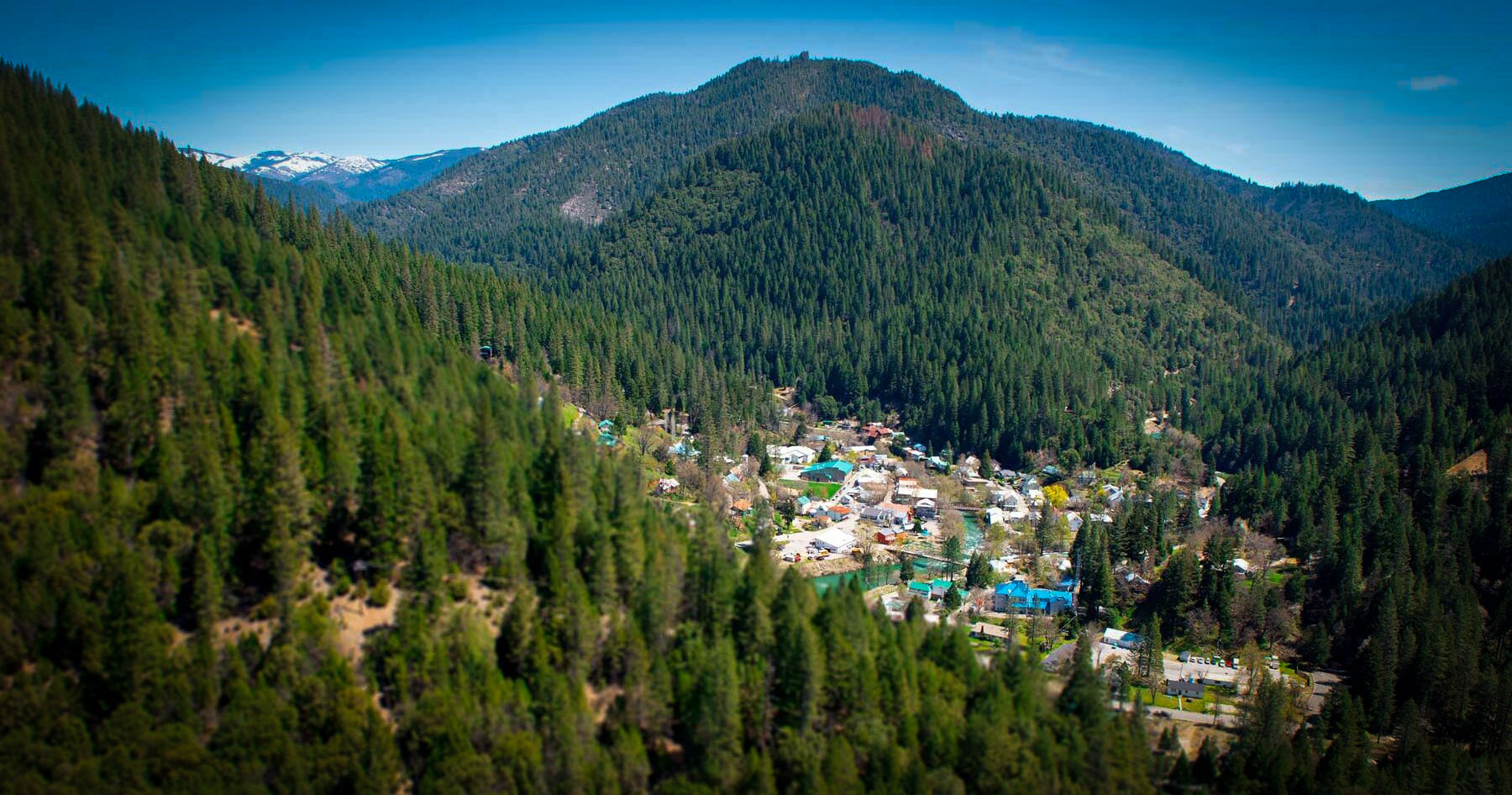
Governor Newsom Signs Legislation Investing $170 Million for California Conservancies to Prevent Catastrophic Wildfires
April 14, 2025 – Governor Newsom signed Assembly Bill 100, which allocates over $170 million in accelerated funding to conservancies for forest and vegetation management across California. The bill also allocates $10 million to the Karuk Tribe to construct a first-of-its-kind Regional Fire Resiliency Center in northeastern Humboldt County. Funding to State conservancies includes:
• $30,904,000 to the Sierra Nevada Conservancy
• $23,524,000 to the California Tahoe Conservancy
• $31,349,000 to the Santa Monica Mountains Conservancy
• $30,904,000 to the State Coastal Conservancy
• $30,904,000 to the San Gabriel and Lower Los Angeles Rivers and Mountains Conservancy
• $23,524,000 to the San Diego River Conservancy
In addition, Governor Newsom signed an executive order to ensure that the wildfire safety projects funded under AB 100 benefit from streamlining under a previous emergency proclamation issued in March.
Recap of The Spring 2025 Regional Meeting in San Rafael
SPRING 2025 REGIONAL MEETING RECAP
March 27, 2025
A full-capacity audience of over 400 people came together in Marin County (with over 300 joining online) for the Wildfire & Forest Resilience Task Force’s Spring 2025 Regional Meeting. Hosted by Marin Wildfire Prevention Authority and Fire Safe Marin, the agenda and activities focused on critical issues related to community wildfire risk reduction and landscape management in Marin County and lessons from the Los Angeles fires.
If you couldn’t make it in person, or missed the real-time webinar, video recordings are available below.
SPRING REGIONAL MEETING AGENDA HIGHLIGHTS
- Lessons from the Los Angeles Fires: Presenters highlighted key lessons from the 2025 LA wildfires relating to response, community safety, ecosystem resilience and home hardening.
- Building Resilient Communities in Marin and Beyond: Regional leaders shared their progress and priorities for protecting communities since the 2017 North Bay wildfires.
- Director’s Report: Director Wright presented the Task Force’s 2025 Key Deliverables outlining the highest priority actions underway this year to increase wildfire resilience across the state.
- Emergency Proclamation on Wildfire Prevention Projects: Secretary Crowfoot discussed the Governor’s State of Emergency to expedite projects intended to protect California communities from catastrophic wildfire.
- Tools for Improving Community Resilience: A panel of experts explored local and state-level initiatives that are defining data needs, driving down wildfire risk, and influencing access to affordable insurance.
- Expanding Career Pathways in Fire & Forestry: Recent graduates of the FIRE Foundry program shared perspectives on priorities for employee-centered career and workforce development programs.
Welcome & Opening Remarks
• Wade Crowfoot, CA Natural Resources Agency
• Jennifer Eberlien, USDA Forest Service
• Task Force Executive Committee
• Lorelle Ross, Federated Indians of Graton Rancheria
• Damon Connolly, Assemblymember, District 12
Lessons Learned from the Los Angeles Fires
• Alexandra Syphard, Conservation Biology Institute
• Steve Hawks, Insurance Institute for Business & Home Safety
Building Resilient Communities in Marin & Beyond
• Moderator: Jacy Hyde, CA Fire Safe Council
• Jason Weber, Marin County Fire
• Julie McMillan, Ross Town Council
• Mark Brown, Marin Wildfire Prevention Authority
• Claire Mooney, Golden Gate National Parks Conservancy
Director's Report: 2025 Key Deliverables
• Patrick Wright, Task Force
Emergency Proclamation on Wildfire Prevention Projects: Next Steps
• Wade Crowfoot, CA Natural Resources Agency
Tools for Improving Community Resilience
• Moderator: Chris Anthony, UCSD ProWESS Center
• Daniel Berlant, CAL FIRE
• Genevieve Biggs, Moore Foundation
• Jason Brooks, Fire Aside
• John Battles, UC Berkeley
Expanding Career Pathways in Fire & Forestry
• Moderator: Jason Weber, Marin County Fire
• Mimi Choudhury, FIRE Foundry
• Alfredo Campos, FIRE Foundry Graduate
• Meily Jimenez, FIRE Foundry Graduate
• Gabe Cruz, Chula Vista Fire Department
Closing Remarks
• Executive Committee
Planscape Adds Free Tool to Model Treatment Impacts
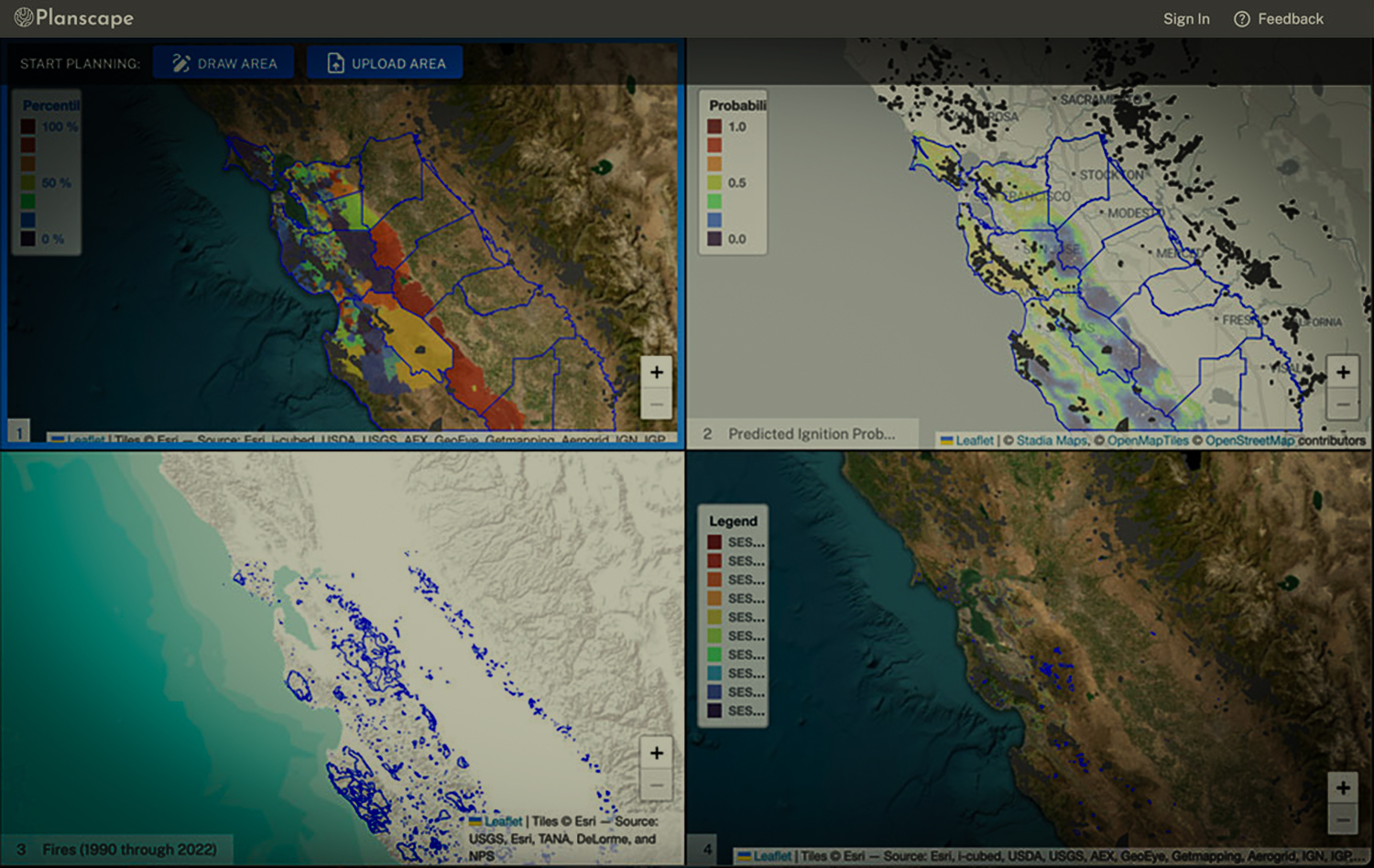
Planscape Adds Free Tool to Model the Impact of Wildfire Resilience Treatments
March 24, 2025 – The Planscape Partnership, a collaboration of public and non-profit organizations, announced the release of Planscape Treatment Effects, the latest update to the Planscape collaborative tool which adds a new suite of features that enables land managers and collaboratives to quickly and efficiently model and report out on landscape resilience treatments. Built in partnership with the U.S. Forest Service (USFS), Google.org, and the State of California, Planscape Treatment Effects allows land managers to run treatment scenarios, see 20-year projections of scenario outcomes, optimize resources, and share data instantly.
With Planscape Treatment Effects, land managers can:
- Plan and compare management options by fuel treatment type, location, and sequence.
- Understand the impact of treatments on outputs such as canopy cover, large tree biomass, and fire intensity in forests, as well as rate of spread and flame length in non-forested areas.
- View outputs over the next 5, 10, 15, and 20 years.
- Leverage the best science and models to run models directly in a web browser.
New Report On Effects of Forest Management on Carbon Storage
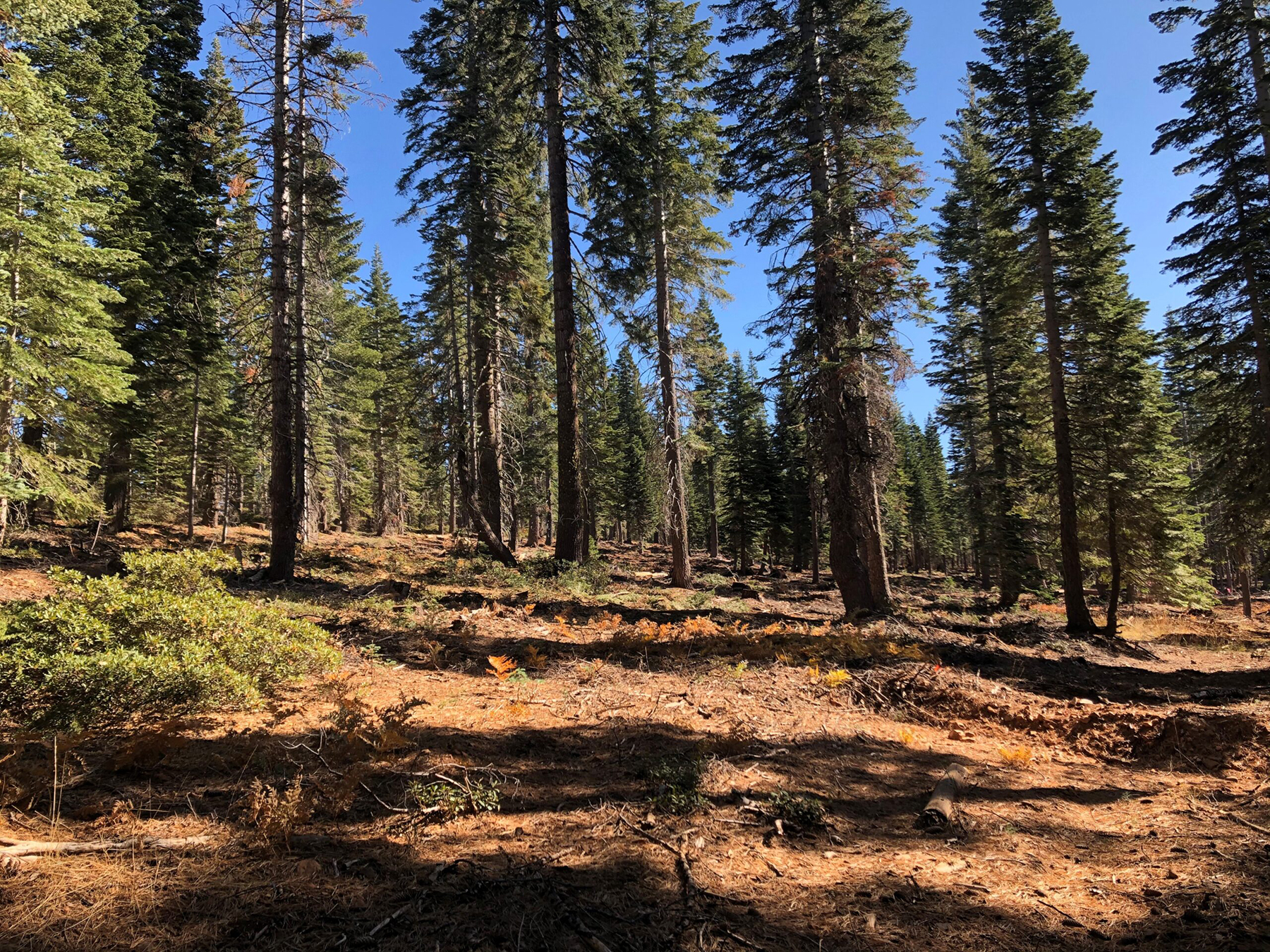
New Report on Effects of Forest Management on Carbon Storage in California
February 18, 2025 – American Forests, USFS, CAL FIRE, The Northern Institute of Applied Climate Science, and Michigan State University recently released a collaborative report on the effects of forest management and wood utilization on carbon sequestration and storage in California. The report provides comprehensive forest sector carbon modeling results, estimated treatment costs, wood product revenue, and wood processing capacity constraints for a broad range of forest management scenarios to help identify climate-smart forestry (CSF) practices. The modeling results provide information about forest climate mitigation and adaption opportunities that will be utilized to help inform the 2025 California Wildfire and Forest Resilience Task Force Action Plan
Notably, the report:
- Identifies 11 million acres in California as having high or very high wildfire hazard potential.
- Emphasizes the importance of wood utilization to improve carbon benefits.
- Predicts that under a business-as-usual scenario, California could lose up to up to 48% of forest area & 50% of forest carbon by 2071.
- Models scenarios that include a portfolio of actions that drastically reduce predicted losses to forest areas and forest carbon.
USFS Partners with Sierra Pacific Industries to Reduce Wildfire Risk
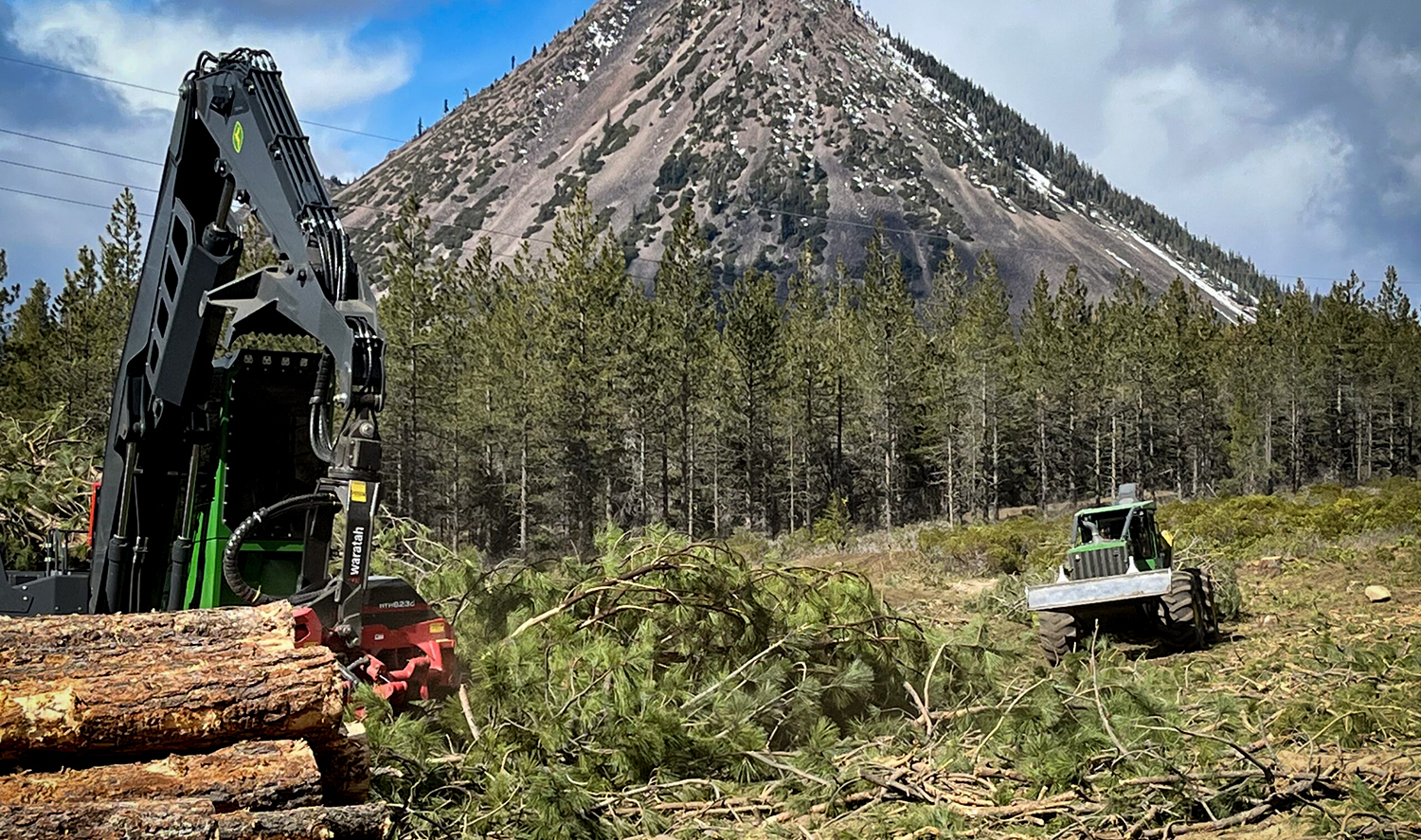
USFS Initiates New Public-Private Partnership with Sierra Pacific Industries to Reduce Wildfire Risk
February 26, 2025 – The US Forest Service announced a $75 million Stewardship Agreement with Sierra Pacific Industries for the construction and maintenance of strategically placed fuel breaks on national forests in California and Oregon. This investment significantly expands upon efforts to create a network of fuel breaks across private and federal land to protect communities, reduce wildfire risk, and promote rural prosperity. The agreement will initiate the process to develop, construct and maintain shaded fuel break projects over a three-year period in California, adding about 400 miles to the existing 2,200-mile network of interconnected fuel breaks across private and federal land. Fuel break project locations were selected in partnership with the Forest Service and CAL FIRE to protect lives, property, critical water infrastructure, and the environment.
Recap of Virtual Briefing on Executing the Emergency Proclamation
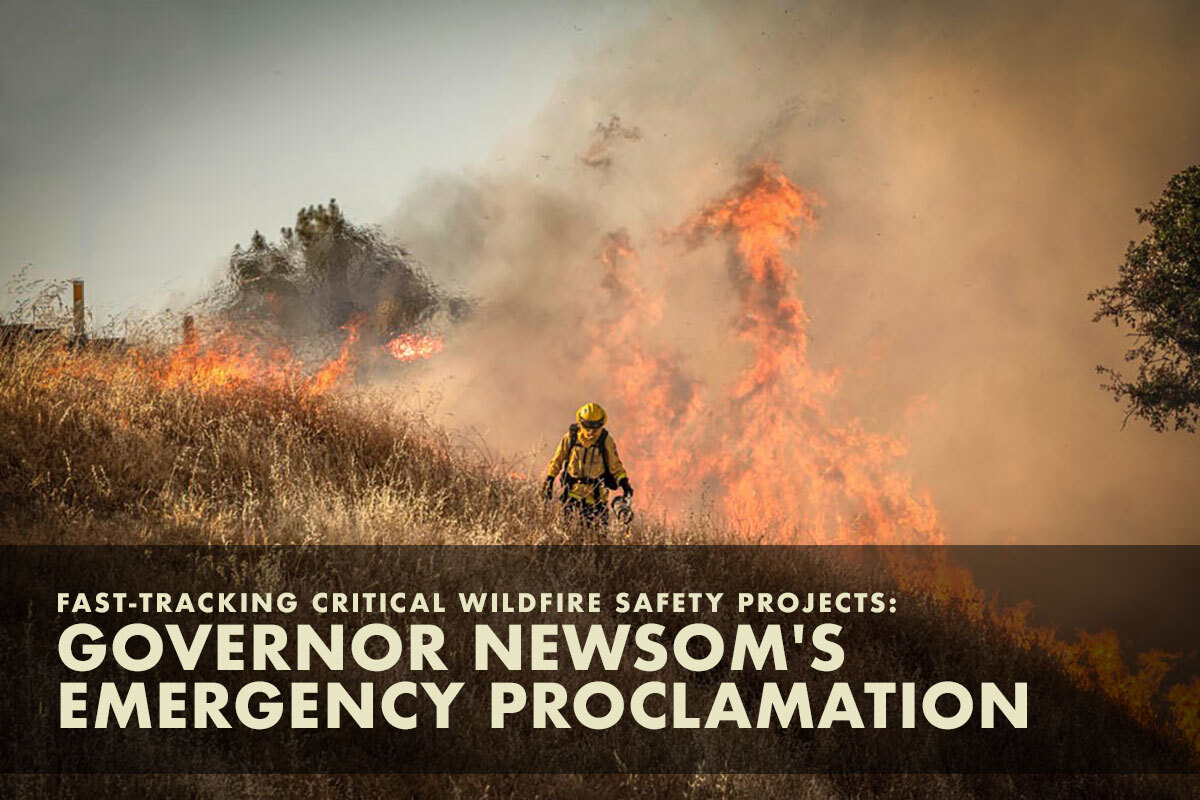
Recap of Virtual Briefing on Fast-Tracking Wildfire Safety Projects and Expanding Beneficial Fire
On March 1, 2025 Governor Newsom proclaimed a state of emergency to expedite projects that will protect California communities from catastrophic wildfire. The proclamation includes:
- Streamlining environmental regulations, including CEQA and the Coastal Act, as needed to expedite fuels reduction projects. Projects include vegetation and tree removal, adding fuel breaks, prescribed fire, and more.
- Allowing non-state entities to conduct approved fuels reduction work with expedited and streamlined approval.
- Directing state agencies to submit recommendations for increasing the pace and scale of prescribed fire.
- Increasing the California Vegetation Treatment Program’s (CalVTP) efficiency and utilization in order to continue promoting rapid environmental review for large wildfire risk reduction treatments.
Questions on Project Streamlining Requests: FuelsReductionSOE@resources.ca.gov
Beneficial Fire Recommendations: BeneficialFireInput@resources.ca.gov
President Trump Orders Immediate Expansion of American Timber Production
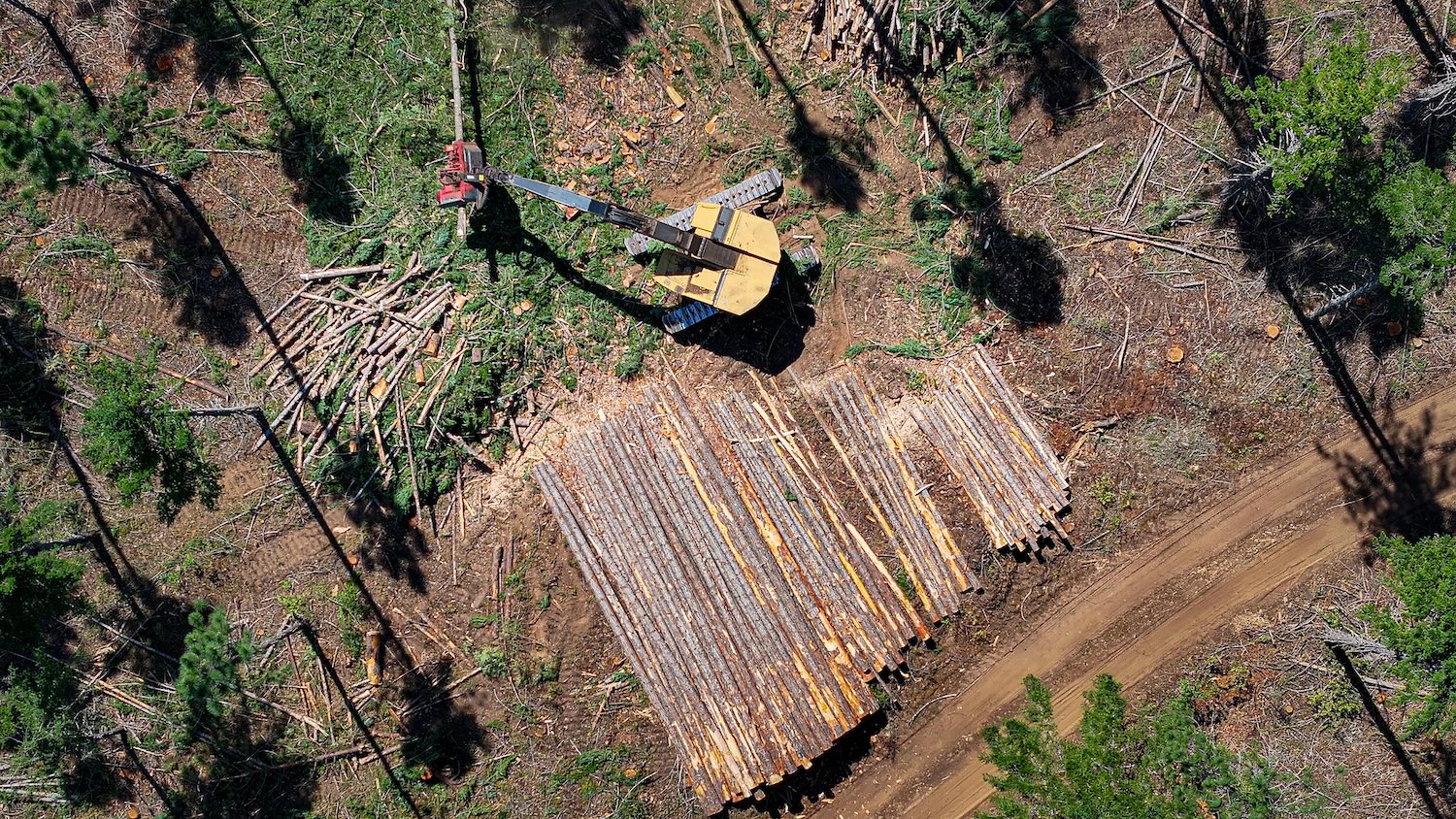
President Trump Orders Immediate Expansion of American Timber Production
March 1, 2025 – President Trump signed an executive order which aims to boost domestic timber production. The order directs the Secretary of the Interior and the Secretary of Agriculture to:
- Within 30 days, issue new or updated guidance regarding tools to increase timber production, reduce time to deliver timber, and decrease timber supply uncertainty;
- Within 60 days, complete a strategy on USFS and BLM forest management projects to increase speed of approving forestry projects under section 7 of the Endangered Species Act (ESA);
- Within 90 days, set a target for the annual amount of timber per year to be offered for sale over the next 4 years;
- Within 120 days, complete the Whitebark Pine Rangewide Programmatic Consultation under section 7 of the ESA;
- Within 180 days, consider adopting categorical exclusions administratively established by other agencies to comply with the National Environmental Policy Act for timber production, forest management, and wildfire risk reduction treatments; and
- Within 280 days, consider establishing a new categorical exclusion for timber thinning and re-establish a categorical exclusion for timber salvage activities.
The order also directs all relevant agencies to eliminate all undue delays within their respective permitting processes related to timber production and use ESA regulations on consultations in emergencies to facilitate timber production. Lastly, the order directs the federal members of the Endangered Species Committee to submit a report that identifies obstacles to domestic timber production related to the ESA.
Additionally, on March 12, 2025, the U.S. EPA announced 31 actions aimed toward environmental deregulation, including reconsideration of exceptional events rulemaking to work with states to prioritize the allowance of prescribed fires within State and Tribal Implementation Plans.
California Signs Cultural Burning Agreement with Karuk Tribe
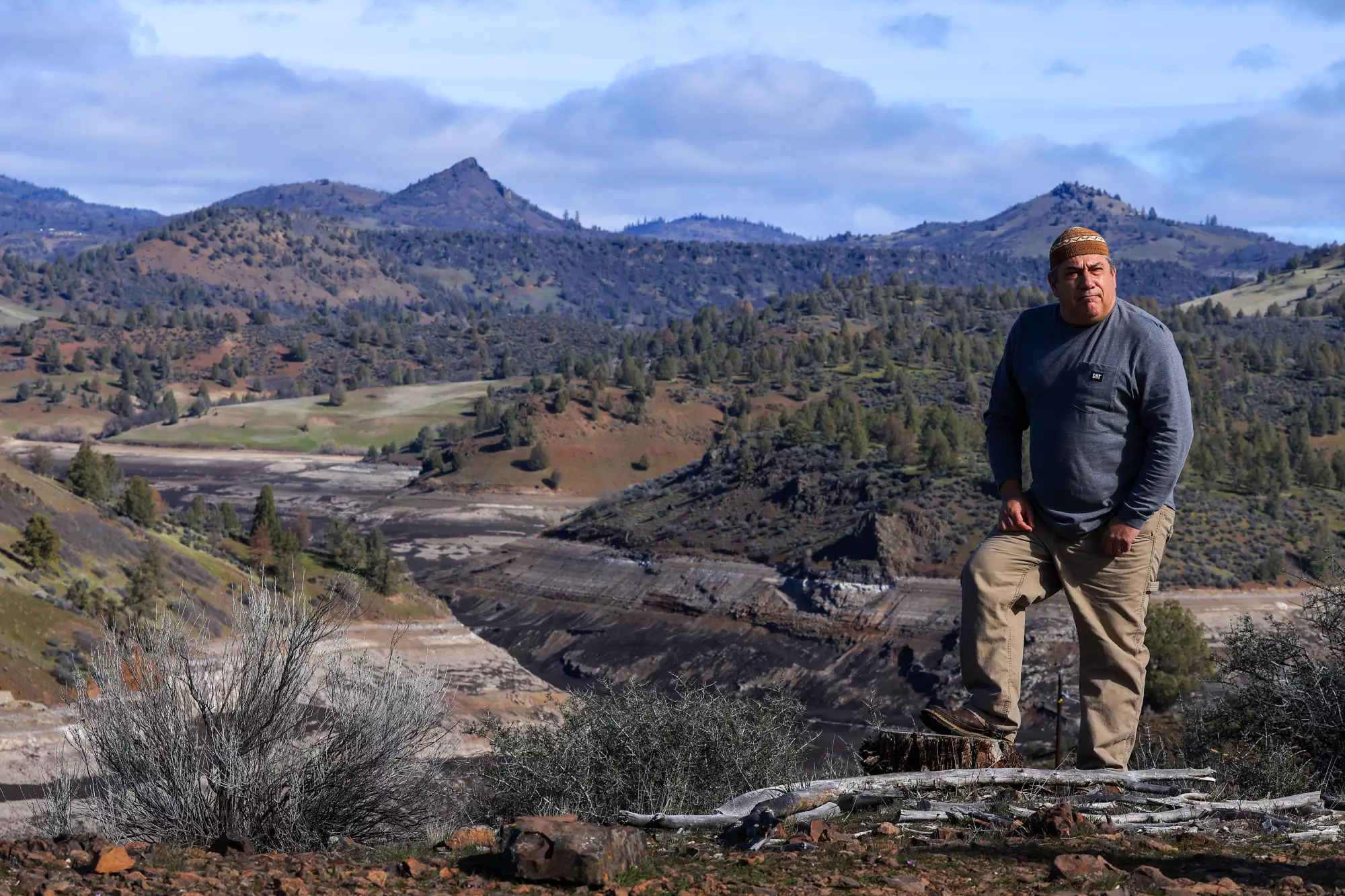
California Advances Wildfire Resilience and Honors Tribal Sovereignty Through Cultural Burning Agreement with the Karuk Tribe
March 7, 2025 – The Karuk Tribe and the California Natural Resources Agency (CNRA) have entered into a historic agreement as part of CNRA and CalEPA’s announcement that SB 310 is now in effect. This legislation and agreement acknowledges tribal sovereignty and addresses historical injustices while contributing to the mitigation of catastrophic wildfire by enabling CNRA and local air districts to enter into agreements with federally recognized California Native American tribes to support them in conducting cultural burns in their ancestral territories. For more information, read the FAQ on SB 310.
CNRA will be hosting a webinar about the landmark cultural burn agreement with the Karuk Tribe and SB 310 on April 1, 2025 at 1pm.
Governor Newsom Signs Executive Order to Further Improve Community Hardening
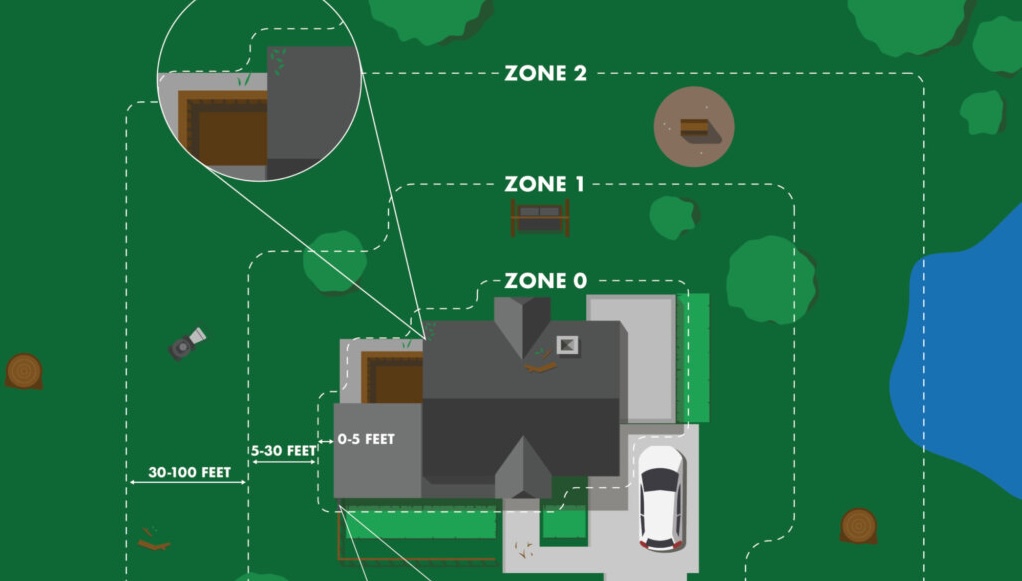
Governor Newsom Signs Executive Order to Further Improve Community Hardening and Wildfire Mitigation
On February 6, Governor Newsom signed an executive order to launch key initiatives to continue adapting to future wildfires and strengthen community resilience to urban conflagration (large destructive fires that spread beyond natural or artificial barriers wherein structures themselves become the fuel that spreads the fire). The executive order:
- Directs the State Board of Forestry to accelerate its work to adopt regulations known as “Zone 0,” which will require an ember-resistant zone within 5 feet of structures located in the highest fire severity zones in the state.
- Tasks the Office of the State Fire Marshal with releasing updated Fire Hazard Severity Zone maps for areas under local government responsibility, adding 1.4 million new acres of land into the two higher tiers of fire severity, which will update building and local planning requirements for these communities statewide.
- Requires CAL FIRE and Cal OES to work with local, federal and tribal partners on improvements to the Federal resource ordering system for wildfire response.
California Continues Quick and Effective Action to Assist Los Angeles Fires Recovery
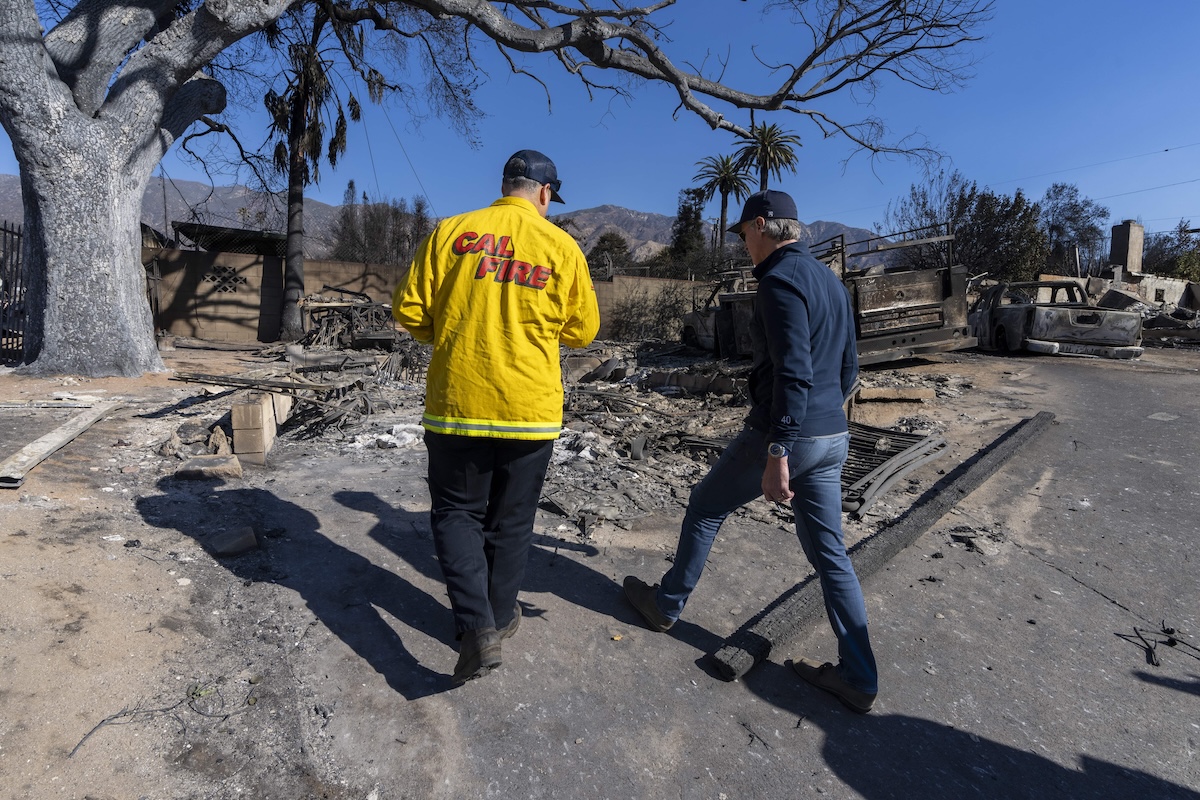
California Continues Quick and Effective Action to Assist Los Angeles Fires Recovery
February 7, 2025 – Governor Newsom has launched historic recovery and rebuilding efforts to accelerate recovery and signed legislation providing over $2.5 billion to support ongoing response and jumpstart recovery efforts for Los Angeles. The Governor has signed 15 executive orders that together are:
- streamlining rebuilding of homes and businesses;
- cutting red tape and suspending permitting requirements under the California Coastal Act;
- removing bureaucratic barriers to provide critical regulatory relief to help fire survivors rebuild, and access essential services;
- providing tax and mortgage relief to impacted communities and businesses, as well as extending tax deadlines;
- fast-tracking temporary housing and protecting tenants; and
- mobilizing debris removal and cleanup and protecting communities from flooding and landslides.
Additionally, State and federal resources have come together to accelerate a safe recovery for Los Angeles:
- The California Conservation Corps (CCC) responded quickly in recovery efforts by installing silt socks and straw wattles around storm drains in the burn zones to keep contaminants found in the ash from washing into the Los Angeles watershed. This was the largest deployment of Corpsmembers in CCC history targeting erosion and contaminant control.
- The California Department of Water Resources deployed over 30 watershed experts and engineers to Los Angeles to support fire mitigation work in burn scar areas and protect downstream communities by keeping toxic runoff out of local watersheds.
- The California Department of Conservation deployed its Watershed Emergency Response Teams to the front lines to quickly assess post fire hazards such as debris flows, flash floods, and falling rocks.
- The California Department of Fish and Wildlife (CDFW) is supporting intake of burned and impacted wildlife to rehabilitation centers, as well as relocating wildlife to help expedite recovery for both people and animals. CDFW also mobilized staff and volunteers to rescue a population of endangered Steelhead trout in Topanga Creek.
- California State Parks is working with US EPA, Cal OES, and CalEPA to help the recovery effort by hosting two temporary sites to safely process hazardous household materials removed from properties destroyed by the Palisades Fire.
- The U.S. Forest Service continues ongoing assessment of damage from the Eaton and Hughes fires through the deployment of Burned Area Emergency Response (BAER) Teams. These teams include scientists, historians and other subject matter experts that identify potential emergency threats on federal lands, such as human life and safety, national forest property, critical natural resources, and critical pre-historic and historic properties, and more. In addition, BAER Teams coordinate with other agencies, who assist businesses, homes and landowners preparing for rain events and potential flooding and debris flow in fire affected areas.
- The Bureau of Land Management (BLM) is currently engaging in emergency stabilization and rehabilitation (ESR) planning following the Border 2 Fire to mitigate the potential impacts of the burned area, such as mud and debris flows, erosion, and other damages. Additionally, BLM assessed impacts of the Hughes Fire and no emergency stabilization or rehabilitation needs were identified.

